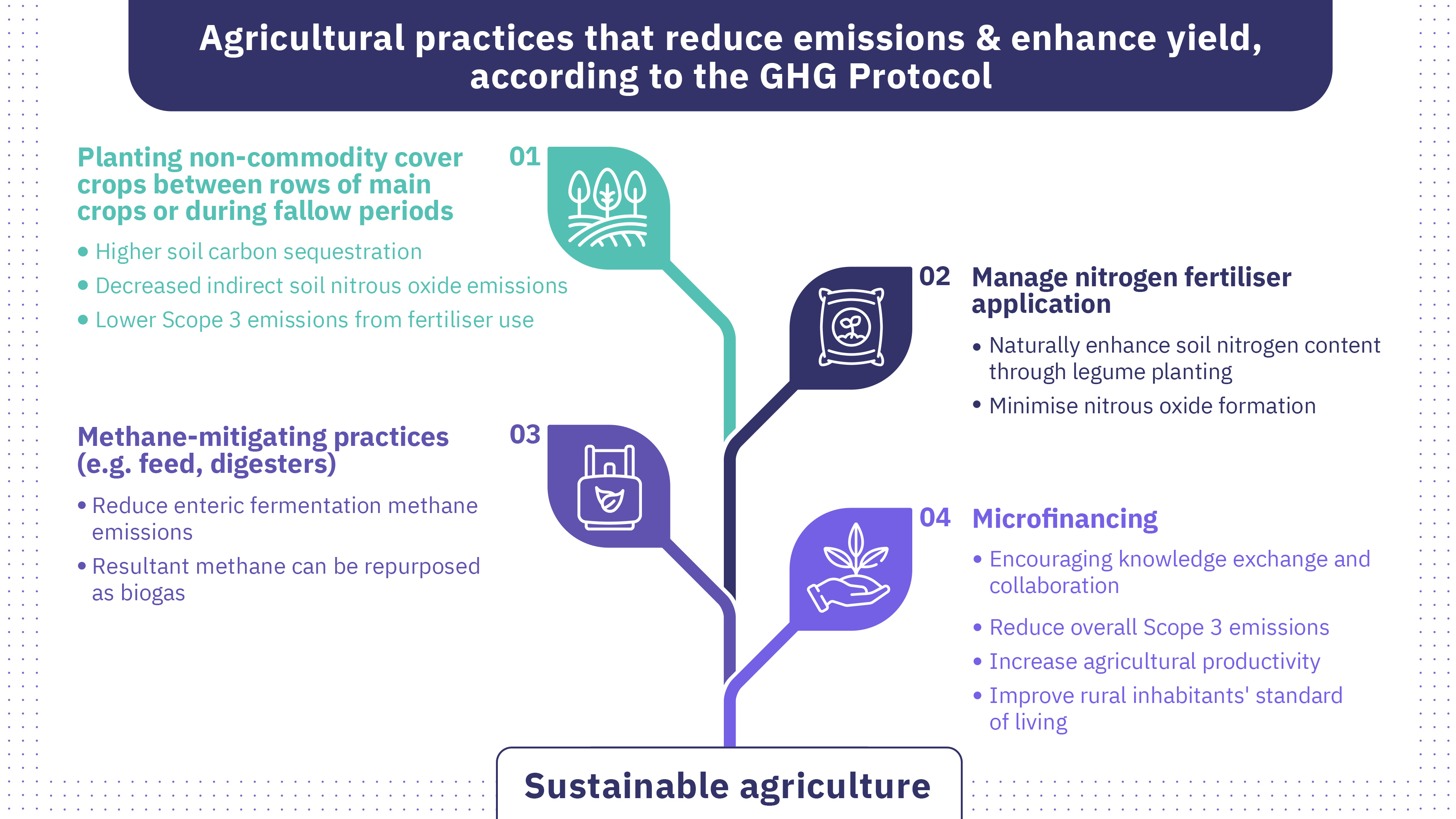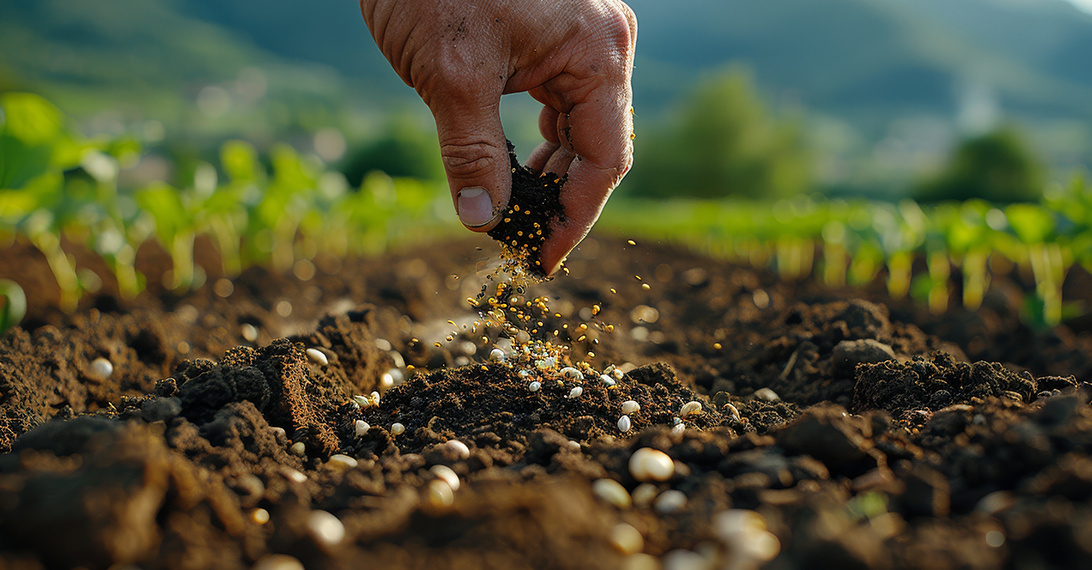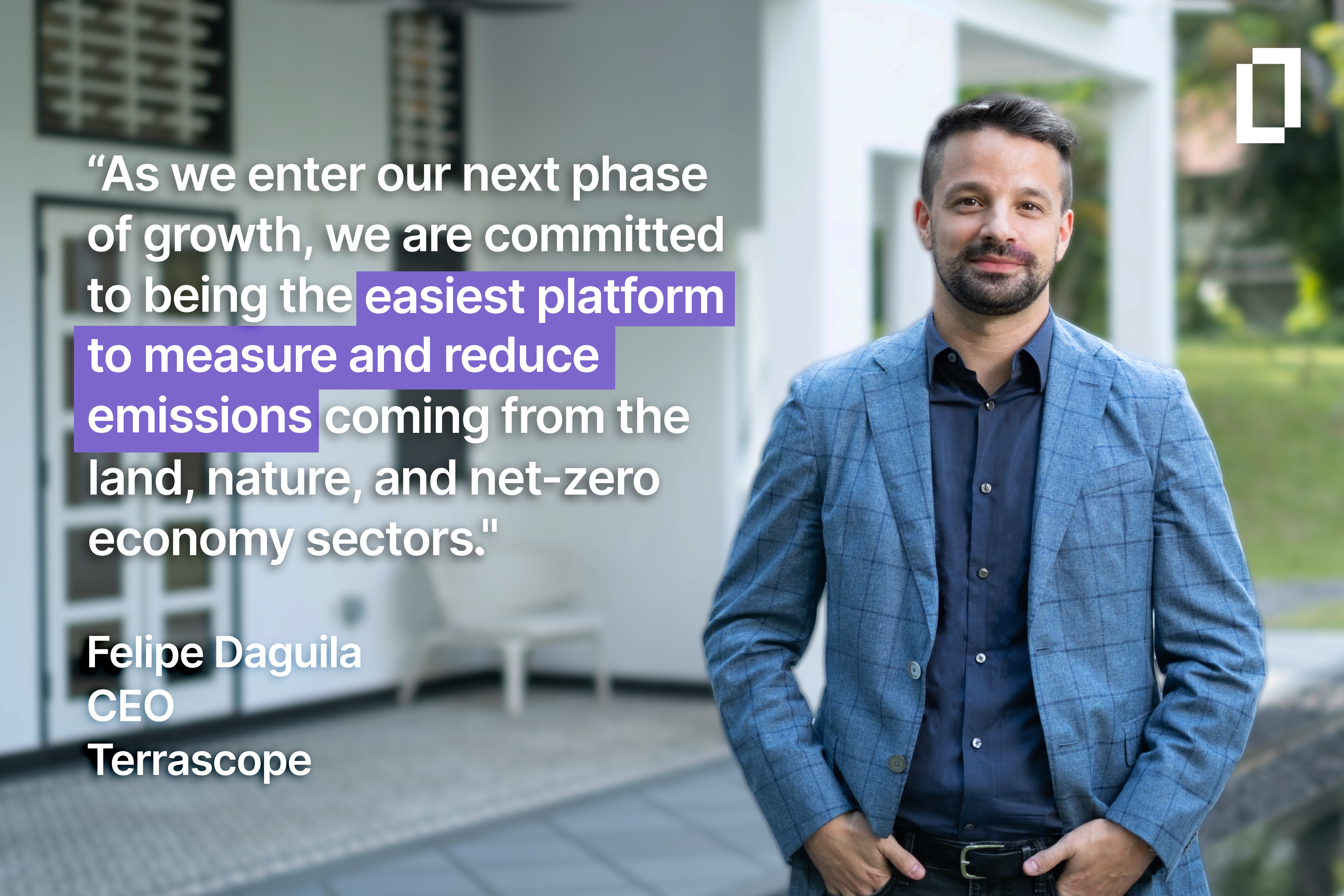Summary
- Human activities, especially agriculture, contribute significantly to greenhouse gas emissions, accounting for 25% to 30% of global emissions, with rising numbers expected due to population growth and food demand.
- Agriculture faces climate challenges as extreme weather affects crop yields and food security. This necessitates sustainable practices to adapt and mitigate how we feed today's world.
- Innovative farming techniques and policy interventions are crucial for reducing agricultural emissions, including efficient nitrogen management, cover crops, and support for smallholder farmers to adopt sustainable practices and enhance resilience.
Greenhouse gases (GHGs) trap heat, causing global warming and significant climate damage. Unsurprisingly, human activities are the primary culprits behind the considerable increase in GHGs over the past 150 years. Although agriculture has been at the heart of human civilisation for millennia, approximately 25% to 30% of global emissions stem from our food systems, rising to one-third when we consider all agricultural products. If not actively addressed, these emissions are expected to rise with the Earth's increasing population and the growing demand for food.
Introduction
The emission contribution from agriculture results from intricate natural processes, posing challenges in quantifying agricultural emissions percentage compared to emissions from burning fossil fuels. Nevertheless, it is important to find effective ways to measure emission contribution from agriculture. This knowledge is a guide for establishing sustainable agricultural practices and aids policymakers, farmers, and researchers in devising strategies for mitigating climate change, improving food system sustainability, and ensuring a resilient future for both agriculture and the environment.
The interconnectedness of agriculture with climate change underscores a critical dynamic in global food systems. Agriculture both influences and is influenced by climate variations, facing challenges from extreme weather events and shifting growing conditions – particularly as we consider that land has to often be cleared to make way for the tillage and cultivation of crops. This land often has forests, rainforests, swamps, marshes or other vegetation growing upon it, each of which function as carbon sinks that remove carbon dioxide from the environment, and release oxygen into the atmosphere through the process of photosynthesis.
Simultaneously, agriculture plays a pivotal role in global supply chains, providing affordable food to meet the demands of a growing global population. Climate change impacts, such as altered precipitation patterns and temperature shifts, directly affect crop yields and pose risks to food security. Sustainable agricultural practices and resilient crop varieties have become imperative to adapt to these changes. Recognising agriculture's dual role — contributor to and mitigator of climate change — is essential for shaping policies and practices that ensure a secure and sustainable food supply for the world's population.
What are the Major Sources of Agricultural Greenhouse Gas Emissions?
Agriculture, known for its energy- and resource-intensive nature, contributes heavily to greenhouse gas (GHG) emissions, encompassing carbon dioxide, nitrous oxide, and methane. In this context, livestock digestion (enteric fermentation) and manure management are primary sources of methane, a substantial greenhouse gas emitted in agriculture. Within the Asia-Pacific region, the largest global rice producer, methane emissions notably prevail because of the anaerobic fermentation of soil from flooded fields. Nitrous oxide, the second-largest contributor, primarily stems from fertiliser application and manure management. Carbon dioxide emissions result from enhanced plant matter decomposition and land conversion. While plant matter in cropland soils function as partial emission sinks, the region's growing demand for rice, synthetic fertilisers, and energy intensifies GHG emissions.
Another significant contributor to carbon dioxide emissions in agriculture is the practice of slash-and-burn land clearing. This method, often employed in certain agricultural practices, involves cutting down and burning vegetation to clear land for cultivation. The combustion of biomass during slash-and-burn activities releases large amounts of carbon dioxide into the atmosphere, contributing to the overall greenhouse gas emissions from the agricultural sector.
While this method is sometimes used as an inexpensive way to prepare land for farming, it has detrimental environmental effects, including soil degradation and loss of biodiversity, making it crucial to explore sustainable alternatives to mitigate its impact on greenhouse gas emissions in agriculture. Additionally, the escalating livestock production for meat and dairy amplifies methane emissions, emphasising the critical need for comprehensive tracking and understanding of these processes to manage emissions effectively in agriculture.

What options do we have to reduce agricultural greenhouse gas emissions?
To cut down agricultural emissions, the first crucial step is enhancing food production efficiency through a transformation in farming practices. Embracing greenhouse gas (GHG)-efficient farming technologies and practices, some already in operation, holds the potential to achieve around 20 percent of the sector's required emissions reduction by 2050.
Some GHG Protocol agricultural practices that contribute to emission reduction while enhancing yield include:
- Planting non-commodity cover crops between rows of main crops or during fallow periods can provide potential GHG-related benefits. These include higher soil carbon sequestration, decreased indirect nitrous oxide emissions from soils due to reduced nitrogen leaching, and lower Scope 3 emissions from fertiliser manufacture. Additionally, there are positive environmental benefits, such as enhanced soil nutrient content, reduced wind and water erosion, and minimised runoff and leaching of nutrients and sediment.
- To minimise nitrous oxide formation, crucial to greenhouse gas reduction, it is imperative to manage nitrogen fertiliser application judiciously. Avoiding the overuse or the mistiming of applications is pivotal and achievable through multiple strategies. Implementing several smaller fertiliser applications during the growing season rather than a single large application is one effective approach. Leveraging drone-based remote sensing for nitrogen levels allows targeted fertiliser application where needed. Curtailing nitrous oxide formation involves avoiding application to very wet soils or during cold periods when plant nitrogen uptake is ineffective. Additionally, utilising legumes as alternative cover crops naturally enhances soil nitrogen content, reducing the necessity for additional nitrogen application.
- Efforts to curtail methane emissions from ruminants' digestive systems involve experimenting with diverse feed additives. However, the potential risks, such as inhibiting digestive function and posing health threats to animals, raise concerns. While increased adoption is anticipated if proven safe, challenges persist. Addressing methane emissions from manure decomposition, anaerobic digesters emerge as promising devices. They foster methane creation from manure decomposition, capturing the resulting biogas for on- or off-site energy use. Despite high capital costs and efficiency variations, digesters are promising solutions to water pollution associated with inadequately managed manure runoff.
Furthermore, policy interventions and incentives can also make a significant difference. Initiatives such as microfinancing provide smallholder farmers with the necessary capital to adopt eco-friendly technologies and implement sustainable agricultural methods. By offering financial support and resources, governments can empower farmers to transition towards practices that enhance soil health, reduce chemical inputs, and minimise environmental impact. Smallholder farm engagement programs further foster community-based approaches, encouraging knowledge exchange and collaboration. These strategic policies not only contribute to increased agricultural productivity but also address environmental concerns, paving the way for a resilient and sustainable future in farming while uplifting rural economies.
How can Terrascope help reduce agriculture emissions?
Terrascope's FLAG (Forest, Land, and Agriculture) Module has pioneered an approach towards companies in land-intensive sectors, for setting Science-Based Targets aligned with the Paris Agreement's 1.5°C goal. As part of the Science-Based Target initiative's (SBTi) FLAG-designated sectors, companies can leverage Terrascope's robust, science-driven approach to efficiently reduce land-related emissions. The module ensures compliance with SBTi and is aligned with the latest GHG Protocol for land sector removals. Enterprises can measure, manage, and reduce FLAG emissions, fostering decarbonisation initiatives and responsible land management.
Work with Terrascope's unique sectoral expertise for a sustainable and impactful journey towards a responsible future today.



